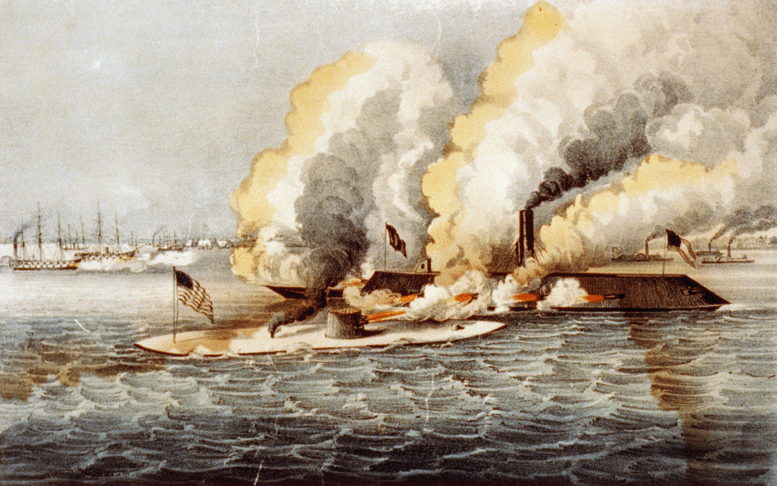

Lieutenant John Lorimer Worden
(USS Monitor)

Commodore John Marston
(USS Cumberland)

Captain (later Full Admiral) Franklin Buchanan
(CSS Virginia)

Lieutenant (later Commander) Catesby ap Roger Jones
(CSS Virginia)

Ironclads engaged in terrific combat by Currier and Ives
The Battle of Hampton Roads is considered a draw by most historians with the Confederacy inflicting more casualties on the Union but did not gain a tactical or strategic victory. The Battle took place on March 8th-9th, 1862 with the Union forces consisting of 1 ironclad (USS Monitor), 5 frigates, 6 auxiliary boats, 2 forts, and 1 shore battery. The Confederate fleet consisted of 1 ironclad (CSS Virginia) , 2 wooden warships, 1 gunboat, 2 tenders, and 1 shore battery. The engagement began with the CSS Virginia sinking two frigates as the Union Frigates could not harm the ironclad with its armor shrugging off the cannons of the forts and ships. The CSS Virginia did lose its ram when ramming the USS Cumberland, but otherwise was mostly unharmed after the first day of fighting. The second day saw the Union and Confederate Ironclads face off for the first time thus changing naval warfare forever. The two ironclads could do little damage to one another and after 4 hours of fighting both sides retreated due to the low tide and low visibility. A total of 1588 men were involved in this battle with 1,400 union sailors and soldiers compared to 188 confederate sailors. The total casualties were 393 with 369 Union casualties and 24 Confederate casualties. The Union lost two frigates, had 2 frigates damaged, 1 ironclad damaged, 3 auxiliary boats damaged. While the Confederacy had 1 ironclad damaged and 1 gunboat damaged.